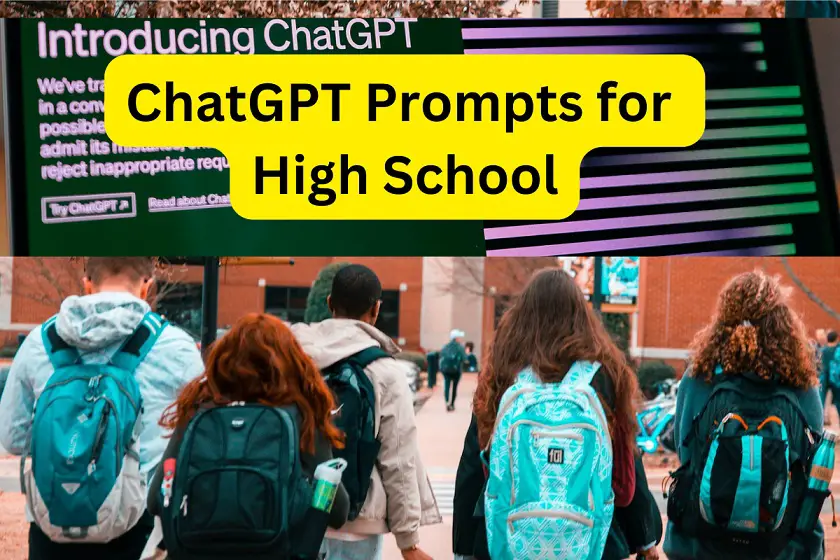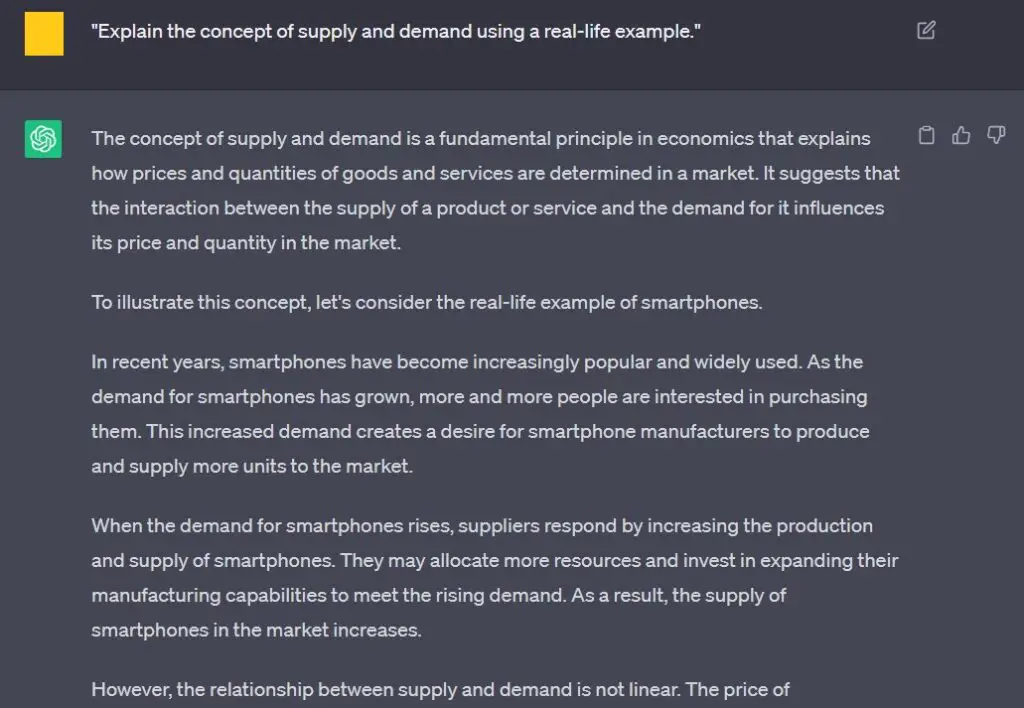Are you a high schooler looking for ChatGPT prompts? In this article we have listed 30 sample ChatGPT prompts for high Schoolers.

Benefits of ChatGPT for Students
ChatGPT can provide several benefits to high school students. Firstly, it can serve as an additional resource for students who need help with their homework or assignments.
The chatbot can provide instant answers to questions related to various subjects, including math, science, and English. The use of ChatGPT can help students save time and effort in searching for answers on the internet or in textbooks.
Secondly, ChatGPT can assist students in improving their writing skills. The chatbot can provide suggestions and corrections for grammar and spelling errors, as well as help students with their sentence structure and vocabulary. This feature can be particularly helpful for students who are not native English speakers.
Lastly, ChatGPT can serve as a study companion for students. The chatbot can provide study tips and techniques, suggest relevant study materials, and even create customized study plans for students. This can help students stay organized and motivated in their studies.
Now let us see some ChatGPT prompts that will be helpful for high school education. You can customize these prompts according to your requirements.
List of 30 ChatGPT Prompts for High School Education

- “Explain the concept of supply and demand using a real-life example.”
- “Discuss the causes and consequences of World War II from a global perspective.”
- “Analyze the themes and symbolism in a novel you recently read for English class.”
- “Explain the principles of photosynthesis and its importance in the ecosystem.”
- “Compare and contrast the major economic systems: capitalism, socialism, and communism.”
- “Describe the process of cellular respiration and its significance for living organisms.”
- “Discuss the impact of the Industrial Revolution on society, economy, and working conditions.”
- “Examine the factors contributing to climate change and propose solutions to mitigate its effects.”
- “Explore the causes and effects of the American Civil Rights Movement in the 20th century.”
- “Analyze a famous painting or sculpture and interpret its artistic elements and meaning.”
- “Discuss the structure and function of the human respiratory system.”
- “Analyze a primary source document related to a historical event and assess its reliability.”
- “Explain the key principles of calculus and how they are applied in real-world scenarios.”
- “Discuss the impact of globalization on cultural diversity and international relations.”
- “Analyze a famous speech or political address and evaluate its persuasive techniques.”
- “Explain the process of mitosis and its role in cellular growth and reproduction.”
- “Discuss the causes and effects of the Great Depression on the global economy.”
- “Analyze a poem by a renowned poet and interpret its themes and literary devices.”
- “Explain the fundamentals of Newton’s laws of motion and their applications in daily life.”
- “Discuss the impact of social media on communication, relationships, and self-image.”
- “Examine the causes and consequences of the French Revolution from a historical perspective.”
- “Analyze a scientific experiment or study and evaluate its methodology and findings.”
- “Discuss the principles of genetics and their significance in understanding inheritance patterns.”
- “Explain the key events and consequences of the Cold War on global politics.”
- “Analyze a famous literary work and explore its cultural and historical context.”
- “Discuss the structure and function of the human nervous system and its role in behavior.”
- “Explain the principles of microeconomics and their application in decision-making.”
- “Discuss the impact of technological advancements on the environment and sustainable development.”
- “Analyze a historical event from multiple perspectives and evaluate the biases in historical accounts.”
- “Discuss the role of ethics in scientific research and its implications for society.”
When a student types in one of these prompts, ChatGPT will generate a response based on its vast knowledge of language and information. The response may include tips, advice, examples, or explanations.
For example, if a student asks about good study habits, ChatGPT may suggest creating a study schedule, taking breaks, and avoiding distractions.
Here is a video on some interesting ChatGPT tips for students.
Using ChatGPT can be a fun and educational experience for high school students. It allows them to explore different topics and perspectives, and to practice their writing skills in a safe and supportive environment. Moreover, ChatGPT can help students develop critical thinking skills by challenging them to ask thoughtful questions and evaluate the quality of the responses.
In conclusion, ChatGPT is a useful tool that can enhance the learning experience of high school students. Its ability to provide instant answers, assist with writing skills, and serve as a study companion can be valuable for students who need help with their academic-related queries.




